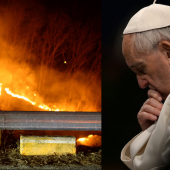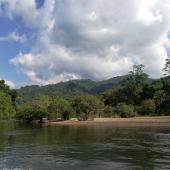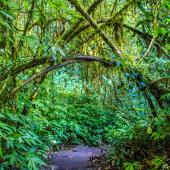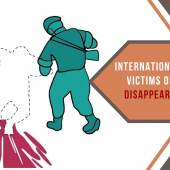Recovering key species for ecosystem restoration
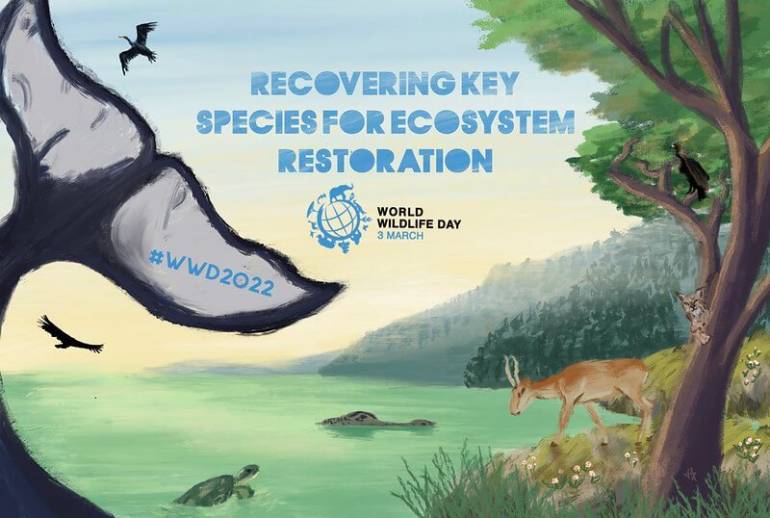
The World Wildlife Day (WWD) is on March 3.
The United Nations (UN) has designated World Wildlife Day (WWD) to increase global awareness of wild animals and plants. The commemoration began on December 20, 2013, when the UN's General Assembly declared March 3 as World Wildlife Day.
In its 68th meeting, the UN decided to honor the world's wildlife by raising awareness about humans and climate change’s danger on March 3. A Convention on International Trade in Endangered Species of Wild Flora and Fauna was held on March 3, 1973. It makes the day historic.
The UN website reveals that between 200 and 350 million people live in or near forests worldwide. Ecosystem services from forests and forest species are critical to people's lives. They use it to meet their most basic needs, including food, shelter, energy, and medicine.
Although ignored by modern civil society, it is undeniable that indigenous peoples and local communities are at the forefront of the symbiotic relationship between humans and forests.
A UN report says that indigenous peoples currently manage around 28% of the world's land surface. These include some of the most ecologically intact forests on the planet. These communities now face climate change loss of biodiversity, exacerbated by the COVID-19 pandemic.
Over 8,400 wild fauna and flora species are critically endangered according to the International Union for Conservation of Nature's (IUCN) Red List of Threatened Species
In contrast, nearly 30,000 are classified as endangered or vulnerable.
Based on these estimates, over a million species are believed to be threatened with extinction.
The Committee of WWD reminds us that "continuing loss of species, habitats, and ecosystems endangers all life on Earth, including humankind."
"Wildlife and biodiversity-based resources provide us with food, fuel, medicines, housing, and clothes. Nature provides livelihoods and economic opportunities for millions of people," says the official World Wildlife Day website.
Meanwhile, the UN's official website reveals the theme for WWD in 2022 is "Recovering key species for ecosystem restoration."
The year’s celebrations will draw attention to the conservation status of some of the most critically endangered wild fauna and flora species and drive discussions towards imagining and implementing solutions to conserve them.
All conversations will be inspired by and seek to inform efforts towards the achievement of UN Sustainable Development Goals 1 (No Poverty), Goal 2 (Zero Hunger), Goal 12 (Ensure sustainable consumption and production patterns), Goal 13 (Climate Action), Goal 14 (Life Below Water ) and Goal 15 (Life on Land).
In 2022, WWD will focus the conversation on the urgent need to save critically endangered species, restore their habitats and ecosystems, and promote human sustainability.
Care for Creation and Stewardship of the Earth: Catholic Social Teaching
The Catholic Church has a well-documented tradition of care for the creation and stewardship of the earth.
The Compendium of the Social Doctrine of the Church Pontifical Council for Justice and Peace, 2005 (no. 466) says that care for the environment represents a challenge for all of humanity.
"It's a common and universal duty to protect the common good, which is meant for everyone, by not letting anyone use different living and non-living things, such as animals, plants, and the natural world, just as they want their own economic needs."
The document reminds Christians that everyone should have a responsibility to grow up because of the global nature of the current ecological crisis and the need to deal with it globally since all living things are interdependent in the universal order.
One must consider the nature of each being and their mutual connection in an ordered system, which is precisely the "cosmos."
Pope Francis says: "The Church is also aware of the responsibility that all of us have for our world, for the whole of creation, which we must love and protect.
"There is much that we can do to benefit the poor, the needy, and those who suffer, and to favor justice, promote reconciliation, and build peace," said Pope Francis.
Meanwhile, on World Day of Peace 2007, Pope Emeritus Benedict XVI said, "Alongside the ecology of nature, there exists what can be called a ‘human’ ecology, which in turn demands social ecology."
"All this means,” the pontiff says, that “humanity if it truly desires peace, must be increasingly conscious of the links between natural ecology, or respect for nature, and human ecology.
Pope Benedict believes that disregard for the environment always harms human coexistence and vice versa.
It becomes more and more evident that there is an inseparable link between peace with creation and peace among men.
How to get involved?
As global citizens, we are all welcome to participate in numerous ways in this international celebration.
According to the WWD website, the initiative's primary goal is to raise awareness about the world's endangered and critically endangered species.
It includes the critical role in their ecosystems, the well-being of communities that live nearby and beyond, and the importance of continuing conservation efforts for them and their habitats.
WWD website suggests some ideas of participation for this year's celebrations
- Learn about the most endangered species in your area and how you and your community can help save them.
- You can also learn about the efforts of conservationists and communities who struggle every day to create a more balanced and sustainable relationship with these species and environments.
- Raise your voice and use social media! Inspire people and organizations to protect endangered species locally and globally with the following tags: #WorldWildlifeDay2022, # RecoverKeySpecies #.
- Bring WWD to school or work! If you can, do this digitally or in person. Discuss endangered animals with your coworkers, teachers, students, or educators.
- We rely on young people as future wildlife conservation leaders and encourage their involvement.
You, too, can take part in the festivities! You can begin by publicizing this year's theme, "Recovering key species for ecosystem restoration."
Radio Veritas Asia (RVA), a media platform of the Catholic Church, aims to share Christ. RVA started in 1969 as a continental Catholic radio station to serve Asian countries in their respective local language, thus earning the tag “the Voice of Asian Christianity.” Responding to the emerging context, RVA embraced media platforms to connect with the global Asian audience via its 21 language websites and various social media platforms.









